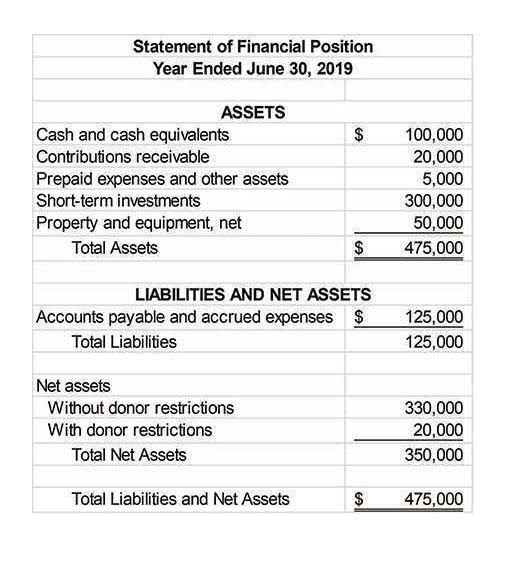
The value of the Company’s non-current assets is stated at cost less accumulated depreciation and impairment losses. Only those assets costing more than £5,000 and having an economic value to the Company beyond the year in which they were bought are capitalised. Where parts of an item have different useful lives, they are accounted for as separate assets. Depreciation is applied on a straight-line basis over the estimated useful economic lives of assets. Depreciation methods, useful lives and residual values of non-current assets are reviewed at least at each balance sheet date. UKGI has considered the newly issued accounting standards, interpretations and amendments to published standards that are not yet effective.
How do current and long-term liabilities differ in accounting?
Most types of liabilities are classified as current liabilities, including accounts payable, accrued liabilities, and wages payable. During the operating cycle, a company incurs various expenses for which it may not immediately pay cash. Instead, these expenses are recorded as short-term liabilities on the company’s balance sheet until they are settled. The operating cycle refers to the period of time it takes for the business to turn its inventory into sales revenue and then back into cash, which helps cover these expenses.

Liabilities in the accounting equation
- As a board, we are proud of the forward leaning work of this relatively new part of UKGI, and the value generated by this report.
- Current liability accounts can vary by industry or according to various government regulations.
- This indemnifies the launch provider against any injury or damage incurred by MOD personnel or property on-site at the time of the launch.
- Owner’s funds/Capital/Equity – Last among types of liabilities is the amount owed to proprietors as capital, it is also called as owner’s equity or equity.
- A company may take on more debt to finance expenditures such as new equipment, facility expansions, or acquisitions.
Surplus operating cash is only held within the Government Banking Service. I obtained an understanding of UK Government Investments Limited’s framework of authority and other legal and regulatory frameworks in which UK Government Investments Limited operates. I focused on those laws and regulations that had a direct effect on material amounts and disclosures in the financial statements or that had a fundamental effect on the operations of UK Government Investments Limited. The key laws and regulations I considered in this context included Companies Act 2006, Managing Public Money, employment law and tax legislation. The Contingent Liability Central Capability’s (CLCC’s) report on the UK government’s contingent liabilities was published as part of the Autumn Statement’s ancillary documents.
Fixed vs Variable Costs (with Industry Examples)
These obligations can offer insights into a company’s ability to manage its debts and its potential capacity to take on additional financing in the future. According to its product summary, this index fund aims to track the performance of the investment-grade U.S. municipal bond market using the Standard & Poor’s National AMT-Free Municipal Bond Index. Vanguard says that at least 80% of its assets are invested in index securities, with income exempt from federal taxes, though interest rate changes can affect bond prices and income. Directors’ emoluments include salary, performance pay awarded in the period and employer’s pension contributions. Full details of the Directors’ remuneration including policies are available within the remuneration section of this report. Revenue from other government departments relates to fees charged for the provision of shareholder services.
12 12. Commitments and Leases

This process of regular review and challenge by senior executives ensures that the information provided to the Board and its committees is up-to-date and reliable. To ensure that contingent liabilities are utilised effectively to deliver value-for-money policy interventions, the CLCC produces specialist guidance notes for departments. The team also develops tools to standardise the quantification of contingent liabilities and conducts thematic reviews to provide recommendations for improving risk management. Additionally, the CLCC’s annual publication, CLCC Annual report on the UK government’s contingent liabilities, quantified £23bn of contingent liabilities that do not require disclosure in Departments’ Annual Reports and Accounts. These liabilities can now be considered from a balance sheet handling perspective. During the last year, UKGI continued to work with the Department of Energy Security and Net Zero (DESNZ) and with Sizewell C, one of the newer assets in the portfolio of government organisations with which UKGI works.
How To Find Liabilities in the Balance Sheet
- Under that law they have elected to prepare the Financial Statements in accordance with UK adopted International Accounting Standards and applicable law (International Financial Reporting Standards).
- The review of business and disclosure of principle activities and risks in the year are included in the Strategic Report.
- Balance Sheet statements are frequently created at the end of a month, quarter, or year and thus, assets and liabilities are viewed as of those particular moments as well.
- In some special cases, it may be held that the claim is more like equity than a liability.
- An expense is the cost of operations that a company incurs to generate revenue.
I design procedures in line with my responsibilities, outlined above, to detect material misstatements in respect of non-compliance with laws and regulations, including fraud. The extent to which my procedures are capable of detecting non-compliance with laws and regulations, including fraud is detailed below. As a result, steps are being taken to remedy those 2015 reforms, making the pension scheme provisions fair to all members.

Part 2: Your Current Nest Egg
For example, a large car manufacturer receives a shipment of exhaust systems from its vendors, to whom it must pay $10 million within the next 90 days. Because these materials are not immediately placed into production, the company’s accountants liabilities are the amounts of money due to others that need to be paid now. record a credit entry to accounts payable and a debit entry to inventory, an asset account, for $10 million. When the company pays its balance due to suppliers, it debits accounts payable and credits cash for $10 million.
Pensions schemes

The address of the Company’s registered office is Eastcastle Street, London W1W 8DH. In my opinion the part of the Remuneration Committee Report to be audited has been properly prepared in accordance the Government Financial Reporting Manual. UKGI’s learning and development policy aims to ensure that its staff have the right skills to meet its objectives. UKGI provides targeted training and support for professional studies to enhance the skills base of its employees. Pension benefits are provided through the Civil Service pension arrangements. Any UKGI performance related pay is calculated as a fraction of rather than multiple of salary.
Employers also contribute a further 0.5% of pensionable salary to cover the cost of centrally provided risk benefit cover (death in service and ill health retirement). In alpha, pension builds up at a rate of 2.32% of pensionable earnings each year, and the total amount accrued is adjusted annually in line with a rate set by HM Treasury. Members may opt to give up (commute) pension for a lump sum up to the limits set by the Finance Act 2004.